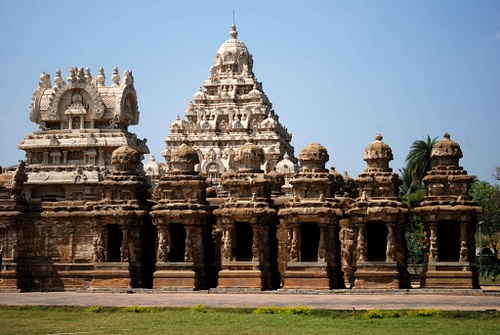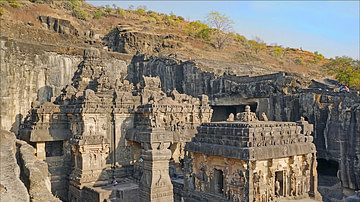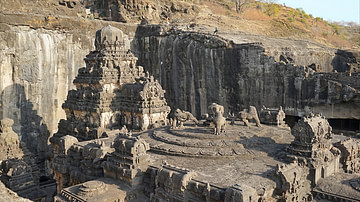
Kanchipuram (sometimes simply called Kanchi or Kanci) is an ancient city in the Tamil Nadu region of southern India. Once a capital of the Pallava dynasty, Kanchipuram was also a noted centre of learning for Tamil and Sanskrit scholars. Known as 'the religious capital of the South' its early 8th century CE Kailasanatha temple is one of the most impressive structures surviving from ancient India.
Historical Overview
The city was at one time the capital of the Pallavas (4th to 9th centuries CE). Kanchipuram fell to King Pulakesin II (r. 610-642 CE) in the 7th century CE when this powerful Early Western Calukya ruler defeated Harsa of Kanauj. Falling again into Pallava hands it was recaptured by the Calukya ruler Vikramaditya II (r. 733-746 CE) and a contemporary inscription at the site records this victory. Kanchi was also the home of the famous 6th century CE poet Bharavi who wrote the Kiratarjuniya and the famous 11th to 12th century CE Hindu philosopher Ramanuja. Still today an important religious centre, the site has over 120 temples and is also noted for its production of fine silk saris.
Kailasanatha Temple
The Kailasanatha (or Rajasimhesvara) is one of the largest and most ornate ancient temples in the whole of India. Built by the Pallava king Rajasimha (reign 700-728 CE and otherwise known as Narasimhavarman II) it is dedicated to the Hindu god Shiva. The sandstone structure is enclosed within a highly decorative wall which has interior niches forming 58 separate shrines containing figures of Shiva, Parvati, and Skanda. The shrines also have traces of colourful murals, now lost.
The western side of the perimeter wall once had an early barrel-vaulted gopura or monumental gate but the now principal entrance is dominated by the Mahendravarmesvara, which is actually a shrine not a gate. Named after Rajasimha's son, it contains a large sacred linga (phallus). The placement of this shrine and the memorial shrines actually outside the compound on the east side are unique in Hindu architecture. The entrance to the temple building itself is composed of the typical columned porch, the mandapa, which is open on four sides and now connected to the temple proper by a more modern six-columned hall.

The Kailasanatha has one of the largest and most complex towers (vimana) anywhere. The inner sacred shrine (garbhagriha) has a circumambulatory passage for worshippers to ritually walk around it. The three exterior walls of the garbhagriha have seven lesser shrines placed around them and each contains an image of Shiva. The whole of the exterior of the temple is covered in a mass of relief sculpture, notably of rearing lions (yalis), Nandis, attendants of Shiva (ganas), Shiva, and other Hindu deities.
Vaikunthaperumal Temple
Unusually for a Pallava temple the Vaikunthaperumal, built by Nandivarman II in the late 8th century CE, is dedicated to Vishnu. It is one of the latest surviving temples built by the Pallavas. Again dominated by a huge tower, the temple is also exceptional for its triple shrine, one on each story and each containing an image of Vishnu. A mandapa with eight columns leads to the sacred shrines within where there are two circumambulatory passages on the first floor. The interior walls of the temple are decorated with relief sculpture depicting scenes from the history of the Pallava dynasty.

Other buildings at Kanchipuram include several smaller Pallava shrines of which the Muktesvara and Matangesvara are the biggest. The small Cokkisvara temple dates to the 12th century CE and has been restored. Finally, the Varadaraja temple was built in the early 17th century CE and has a massive gopura and outstanding sculpture on its exterior, notably the rearing lions of its mandapa columns. Besides the abundant sculpture adorning the various monuments of the city several excellent figures of yoginis have survived, typically in greenstone and dating to the 9th and 10th centuries CE.




